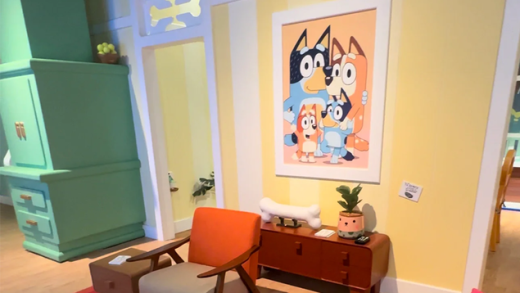If Michelangelo were alive today, what would he create? What if he had access to modern materials like stainless steel, invented more than 400 years after David was chiseled from marble? And what if he could collaborate with other artistic titans of their respective eras?
Such a thought experiment now has legs — literally. Swedish engineering company Sandvik Group’s latest project, an AI-designed sculpture inspired by master artists from different periods of human history, is a groundbreaking fusion of art, technology, and engineering.
Here’s a look at how this monumental endeavor came to life.
The concept: artistic genius meets AI
The project began with a seemingly impossible prompt: create a sculpture that combines the aesthetics of various art movements and masters from different historical epochs. Robert Luciani, executive advisor at The AI Framework in Stockholm, was tasked with the challenge of using AI to analyse and synthesise elements of notable artists’ works.
“Sandvik asked me to use AI to create a sculpture based on works by Rodin and Michelangelo,” says Luciani. ”They wanted top-level classical beauty, and that sounded straightforward enough — but then they added names to the list such as Augusta Savage, Käthe Kollwitz, and Kotaro Takamura, who have totally different [artistic] directions, including expressionism and social justice… It really became quite a challenge,” says Luciani.
The initial AI-produced results were rough sketches and silhouettes — and they left the Sandvik team less than inspired. But as the project progressed and the engineers fine-tuned their prompts, the AI’s design evolved into a detailed 3D model, capturing the essence of each artist’s style. The final statue is a human-sized form with an outstretched hand, holding a globe that seems to magically adhere to it. The figure symbolises the power and unity of art and technology.

Credit: Sandvik
The execution: AI and the creative process
Producing this stunning AI-generated sculpture presented several engineering challenges. Unlike traditional sculptures made from bronze or marble, Sandvik’s piece was crafted from stainless steel, a material chosen to showcase cutting-edge software and tools.
Computer Aided Manufacturing (CAM) and Machining Specialist Jakob Pettersson explains that using stainless steel allowed Sandvik to demonstrate their ability to work with difficult materials and intricate designs. “We could [have used] aluminum — that would’ve made the cutting easier — but we didn’t want to make it easy,” he says. “Translating the winding forms in this statue into classic industrial programs normally used for prismatic geometries was [another] serious engineering challenge.”
The AI used in the process, too, was less than straightforward. Sandvik relied upon several different algorithms to produce the results. “Rather than designing an AI system from scratch that went from concept to statue, we decided to use many AI systems so that we could iterate and continually improve what came out,” says Luciani.
The production process incorporated digital manufacturing techniques, such as precise digital simulations, to ensure seamless and no-waste production — not a single scrap of steel went unused. The final sculpture required just two and a half tonnes of material, versus the eight tonnes a more manual design would have needed.
Sandvik utilised Mastercam’s Mill-Turn solutions to optimise and synchronise toolpaths, making complex machine programming more manageable. Thanks to Sandvik’s digital twin technology, the team was able to anticipate potential issues and avoid setbacks during machining. And to guarantee the sculpture’s quality, the team also leveraged Metrologic Group, a part of Sandvik Group that specialises in verifying product specifications and providing quality indicators.

Credit: Sandvik
The future: embracing the impossible
“The Impossible Statue,” as the artwork has been named, embodies the essence of innovation, combining centuries of artistic heritage with advanced technology and engineering. The project showcases Sandvik’s commitment to pushing the boundaries of what’s feasible in the realm of manufacturing and design.
“The Impossible Statue demonstrates our ability to create highly automated processes,
from design, data, and planning to machining and verification,” says Nadine Crauwels, president of Sandvik Machining Solutions. “The future of manufacturing is forming with and around us. And we truly enjoy capturing these possibilities together with our customers.”
The successful completion of the Impossible Statue serves as a testament to the limitless potential of AI and human ingenuity — so long as they work hand in hand.
To learn more about this groundbreaking project, read on about the artistic process on Sandvik’s website








